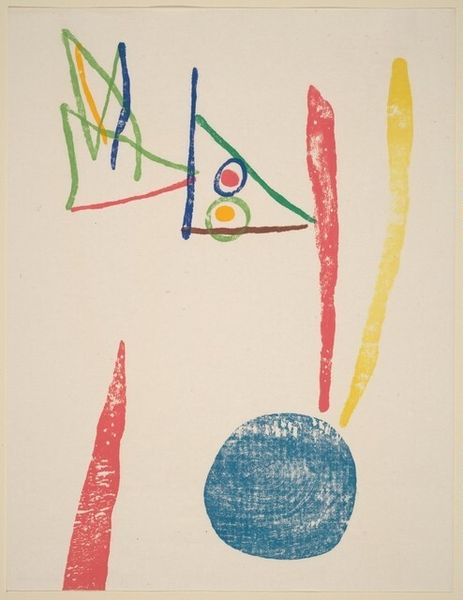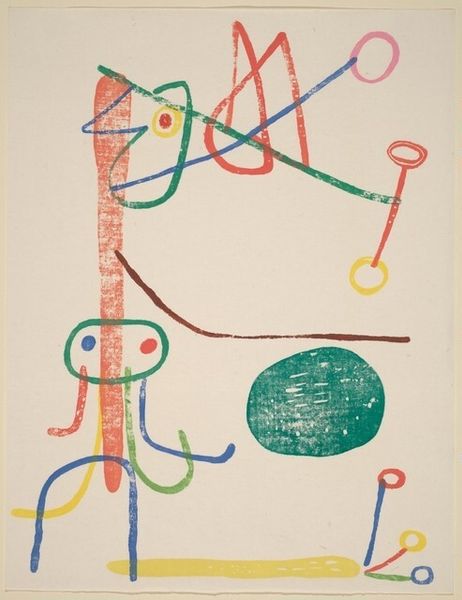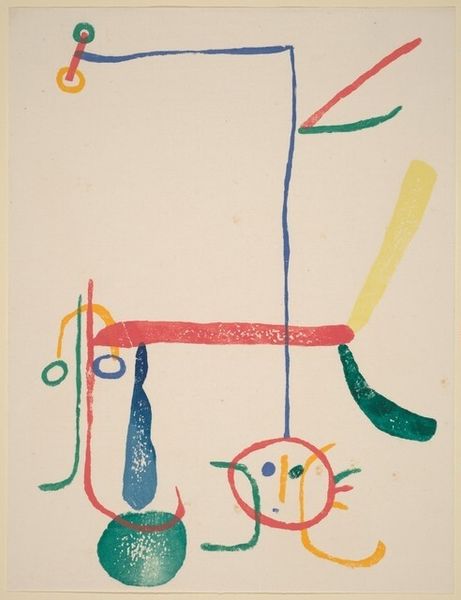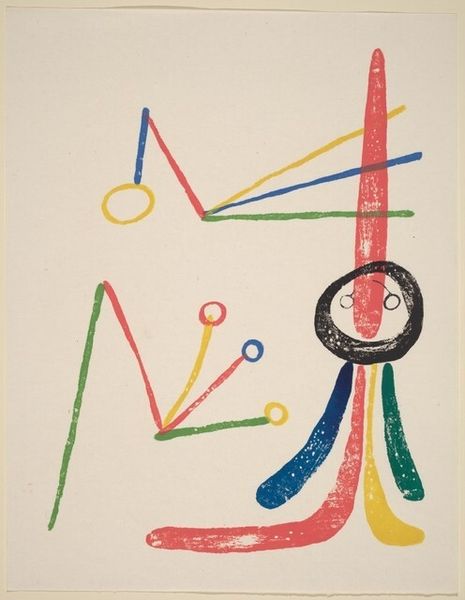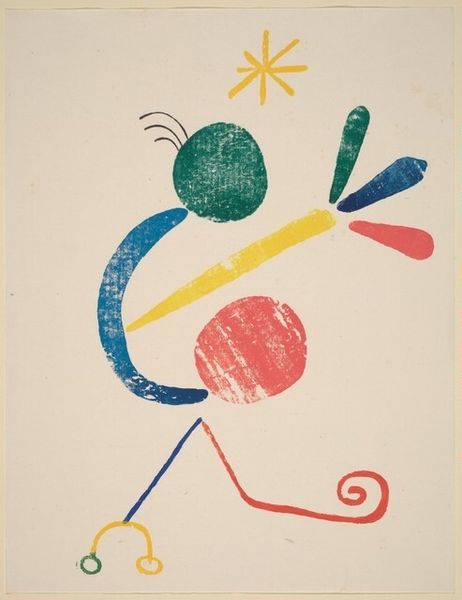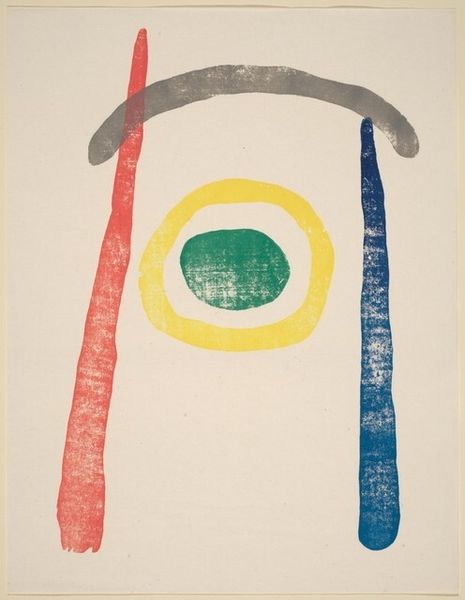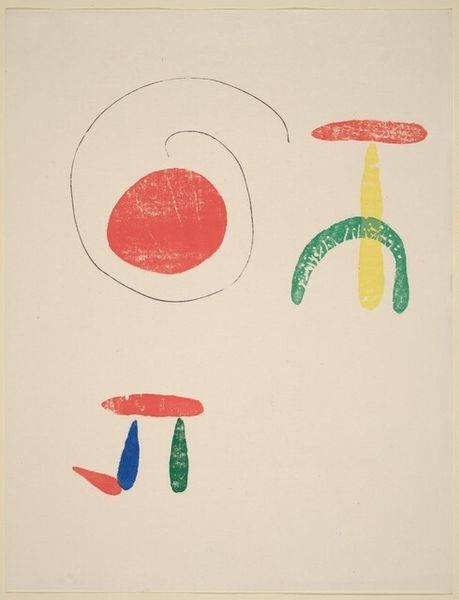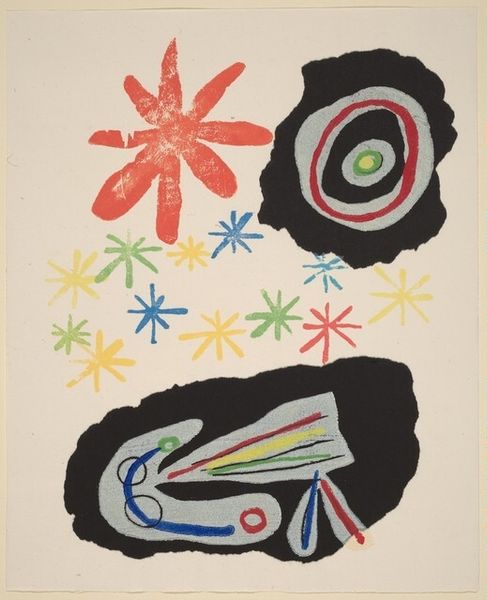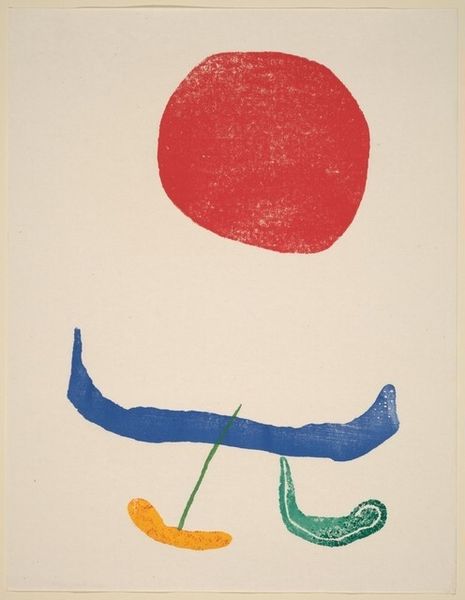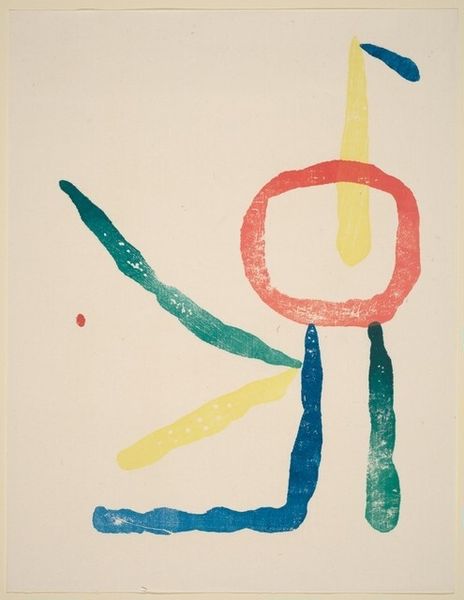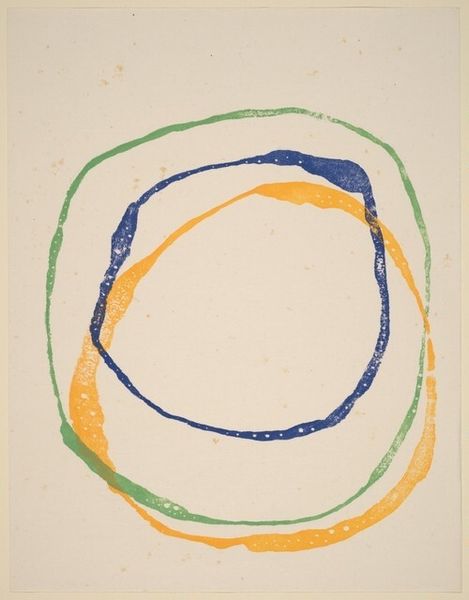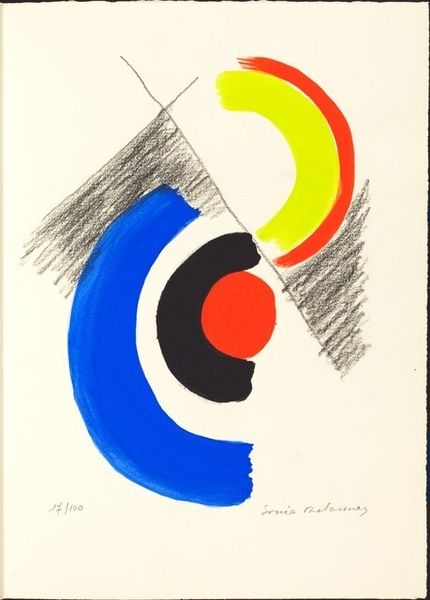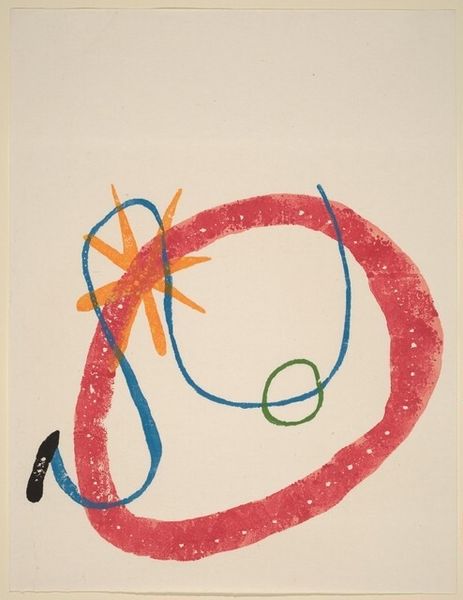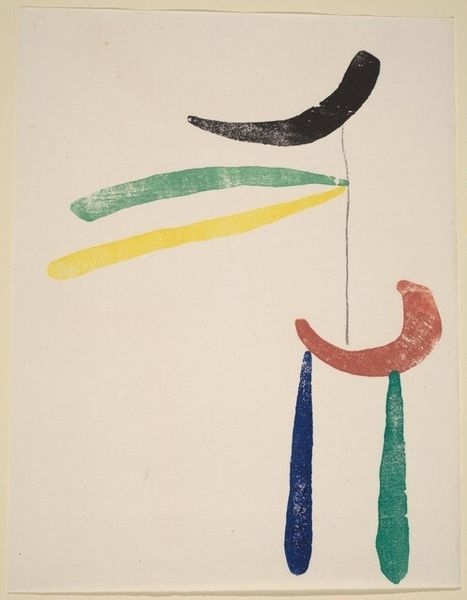![Untitled [plate LXIII] by Joan Miró](/_next/image?url=https%3A%2F%2Fd2w8kbdekdi1gv.cloudfront.net%2FeyJidWNrZXQiOiAiYXJ0ZXJhLWltYWdlcy1idWNrZXQiLCAia2V5IjogImFydHdvcmtzLzU0MGY5Y2U5LWIwZjUtNDNiMi05NDlkLTM0NTA1NGMzMzcxYi81NDBmOWNlOS1iMGY1LTQzYjItOTQ5ZC0zNDUwNTRjMzM3MWJfZnVsbC5qcGciLCAiZWRpdHMiOiB7InJlc2l6ZSI6IHsid2lkdGgiOiAxOTIwLCAiaGVpZ2h0IjogMTkyMCwgImZpdCI6ICJpbnNpZGUifX19&w=1080&q=75)
print, linocut, paper, ink
#
abstract-expressionism
#
ink paper printed
# print
#
linocut
#
pop art
#
pastel colours
#
paper
#
ink
#
linocut print
#
geometric-abstraction
#
abstraction
#
modernism
Copyright: National Gallery of Art: CC0 1.0
Curator: It feels surprisingly whimsical. A face, maybe? Disjointed, but with a joyful energy. Editor: Indeed. This linocut print, “Untitled [plate LXIII]” by Joan Miró, dates from 1958. Created using ink on paper, its bold colours and playful forms invite a range of interpretations. We might want to think about how these so-called 'playful forms' challenged the traditional art establishment. Curator: Absolutely. Miró’s rejection of formal representation needs to be seen in light of post-war anxieties, a world searching for new visual languages, perhaps an escape from rigid ideologies through abstraction. Did the materials Miró chose contribute to its accessibility for the working classes? Editor: The availability of linocut printing and the use of bright, accessible colours certainly played a part. But beyond accessibility, I think it's also key to acknowledge Miró’s status. It’s not merely happenstance, but part of a considered effort to bring contemporary artistic concepts to the fore, into social and cultural consciousness. Think of how gallery and museum outreach programmes developed in Europe in the late 50s! Curator: So, are we seeing here not just abstract expressionism, but also hints of nascent pop art, democratizing artistic language through a lens of geometric abstraction? Editor: That is precisely the conversation! What role did state funding for the arts in that decade play in encouraging this type of experimental artistic practices? Or, what expectations were placed on an artist such as Miró? His work might feel effortless, but these explorations took place within particular social and artistic expectations, influencing his creative scope. Curator: These prints definitely make me consider the social impact of accessible art, even abstraction. I’m now more attuned to the cultural forces and conditions from which they arise. Editor: Likewise. Looking at this work, it's hard not to reflect on the changing function of museums in presenting challenging works and their ongoing potential for social impact.
Comments
No comments
Be the first to comment and join the conversation on the ultimate creative platform.
